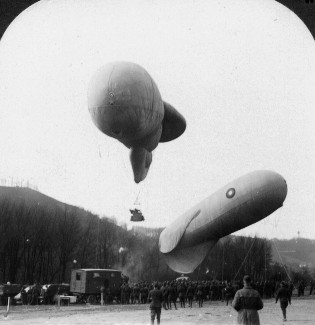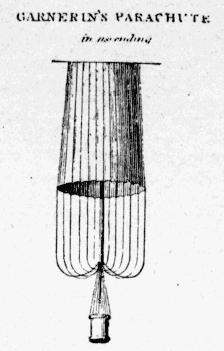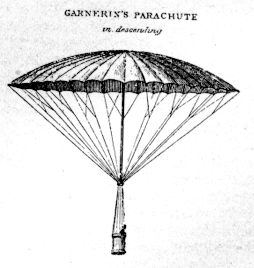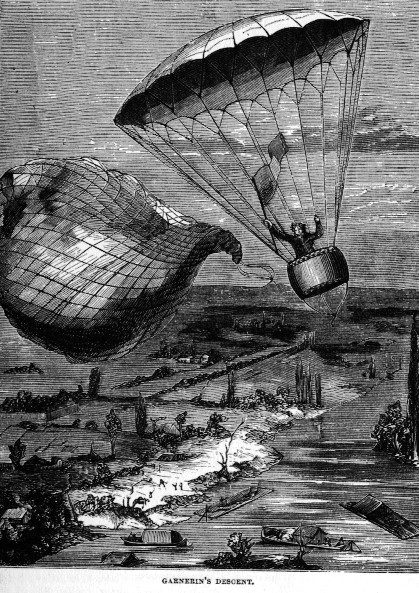Parachutes
Today, let's fall safely out of the sky. The University of Houston's College of Engineering presents this series about the machines that make our civilization run, and the people whose ingenuity created them.
By WW-I, parachutes were pretty well developed, but fighter pilots didn't get to use them. That was only partly because they were bulky in a cramped cockpit. Generals were afraid the hope of escape would undermine a pilot's courage in battle. Lookouts in front-line observation blimps did get parachutes, and they made heavy use of them. Blimps were shot down with tedious regularity.
Parachutes had been around for hundreds of years before we had airplanes. The earliest human experiment we know about was made by an anonymous Asian acrobat who jumped with a pair of large parasols. The French daredevil Lenormand parachuted from a tower in 1783, about the same time the Montgolfier brothers made their first balloon ascent. Lenormand also invented the word parachute. It literally means a-thing-that-opposes-falling.
In 1797 another Frenchman, André Garnerin, was first to jump from a balloon. Garnerin talked his wife into making one jump. Then his niece took up exhibition jumping for a living. And women kept doing exhibition jumps all through the 19th century.
Leonardo da Vinci had included a pyramidal cloth parachute in a 1485 sketchbook, so we credited him with the idea of the parachute. Then historian Lynn White discovered an anonymous set of Renaissance Italian manuscripts on technology. He dated them near 1470 -- about fifteen years ahead of Leonardo. Those notebooks included two sketches of parachutes. One was a brace of long cloth streamers that clearly could've broken a fall. The parachute was very similar to Leonardo's -- conical in shape instead of pyramidal, but identical in all its other features.
So how did the idea reach Leonardo? It was unlikely that he ever saw those manuscripts because, without patent protection, 15th-century inventors were secretive. Renaissance engineers had what White called "an intensely oral tradition." They traded information in conversations, and the idea of the parachute was, as White wryly put it, "in the air" during the Renaissance.
Europe would wait another three hundred years before parachutes were more than a theoretical idea -- before Garnerin would actually step off into the air from a balloon. And the parachutes that actually worked from high altitude were ones made of loose fabrics just as those Italian engineers had suggested.
So the technology had been well-honed by WW-I. It's really an appalling fact that countless pilots went to their death simply to satisfy some morbid concept of heroism. Why, I wonder? Perhaps it is that parachutes had, by then, played so long on the stage of aerial showmanship that no one was inclined to mix them with the images of medieval chivalry surrounding early aerial warfare. Perhaps it was simply the dilemma we face so often -- of being unprepared to move a technology from one arena to another.
I'm John Lienhard, at the University of Houston, where we're interested in the way inventive minds work.
(Theme music)
White, L., Jr., Invention of the Parachute. Technology and Culture, Vol. 9, 1968, pp. 462-467.
This is a greatly revised version of old Episode 44.

Typical WW-I observation balloons
carrying parachute-equipped observers
Stereopticon image provided by Margaret Culbertson


Garnerin's parachute being carried up by a balloon and then carrying a person back to earth (Images from the 1897 Encyclopaedia Britannica)

Click on image for enlargement.
A mid-19th-century impression of Garnerin parachuting from a balloon
From Harper's New Monthly Magazine, 1869